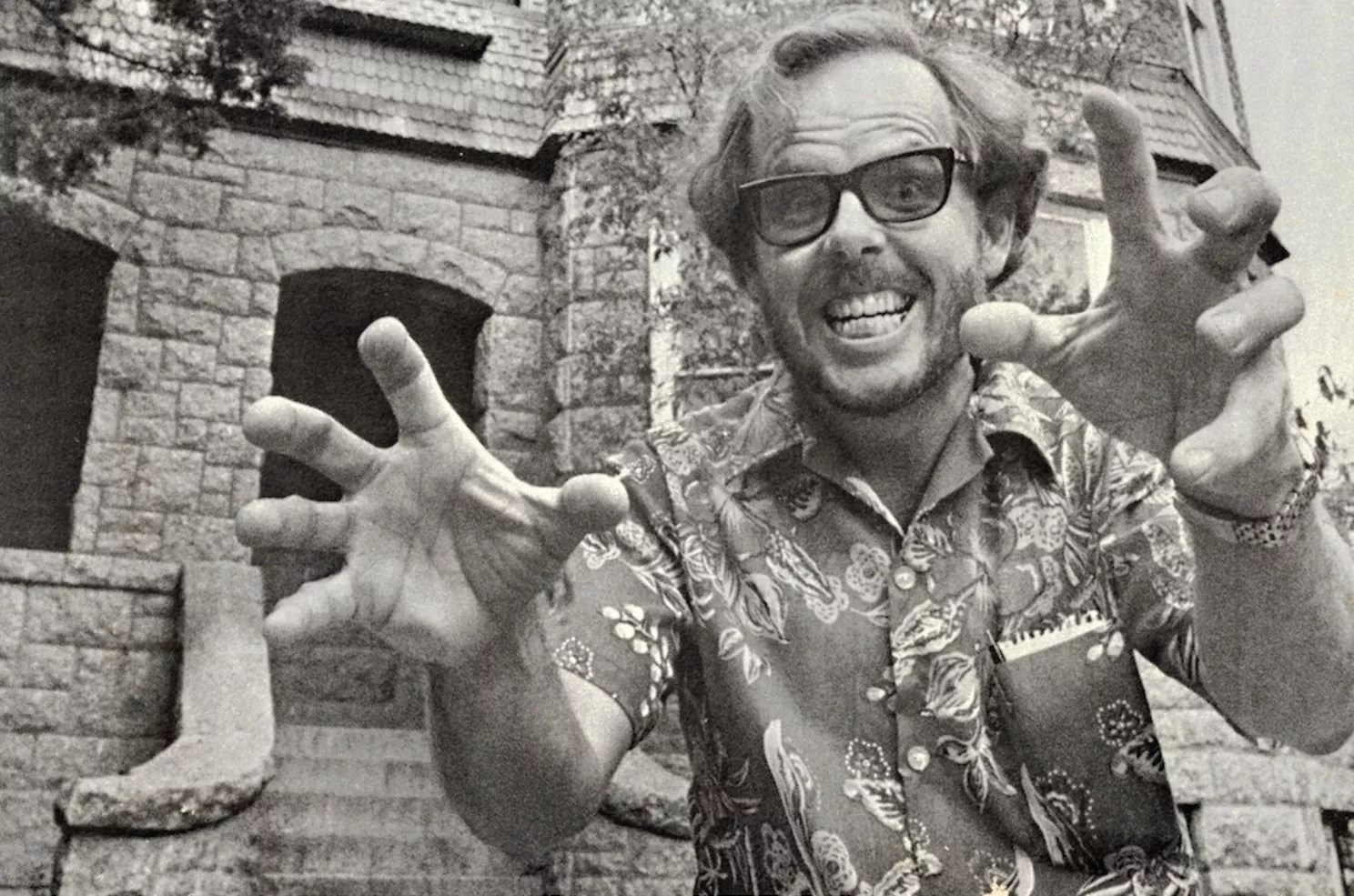
Robert Anschultz

Audio By Carbonatix
The Texas Chainsaw Massacre may be remembered as one of the most violent horror films of its time, but memories have a funny way of tricking your mind. If you actually go back and watch the infamous 1974 horror movie that paved the way for the slasher movie trend, you’ll see that there’s no blood in it at all.
The man responsible for taking the blood out of this “blood-soaked” movie, as film critic Roger Ebert once described it in his two-star review of the movie, was the film’s art director, Robert Burns.
“That’s all Bob,” says Joe O’Connell, a film journalist and director of the documentary Rondo and Bob. The film explores Burns’ life, career and untapped genius and will get its own screening at this weekend’s Texas Frightmare Weekend.
“He said, ‘Keep the blood out of there,'” O’Connell says of Burns. “‘You’ll make people more afraid and people are convinced there’s blood in there.'”
This year, make your gift count –
Invest in local news that matters.
Our work is funded by readers like you who make voluntary gifts because they value our work and want to see it continue. Make a contribution today to help us reach our $30,000 goal!
O’Connell’s documentary delves into the lives of two people: Burns and character actor Rondo Hatton, a Florida sports journalist whose acromegaly caused parts of his face and hands to grow wildly out of proportion and led him to a short career as a character actor in Hollywood. Hatton is best remembered for his role as The Creeper opposite Basil Rathbone in the Sherlock Holmes feature The Pearl of Death.
Burns had an obsession with Hatton’s story and followed him throughout his artistic career through horror classics such as The Howling, The Hills Have Eyes the original Poltergeist and director Stuart Gordon’s interpretation of H.P. Lovecraft’s Re-Animator. O’Connell says Burns collected and even took photos of Hatton’s film appearances on movie screens that he later learned would inspire him to craft a film about Hatton’s life.
“Bob kind of got me to buy into Rondo and understand part of what he found so fascinating,” O’Connell says. “Bob also loved the hunt and Rondo was an extra in 100 films, a lot of which are not listed anywhere. Bob would go to the Paramount Theater in Austin and take shots of Rondo in various films. He was the superfan. He was the superfan who knew he has superfans [himself].”
Rondo and Bob includes interviews and recreations of key moments from both men’s personal lives and in the industry as they sought self-acceptance. Sadly, neither would find it. Hatton died of a heart attack brought on by his condition at 51. Burns took his own life at 60 while suffering from kidney cancer.
“My challenge was to tell both of their stories,” O’Connell says. “I have this weird thing, which is some people are looking for more of a Rondo movie and some are looking for more of a Bob movie and I have to tell them it’s about both of those guys.”
Rondo and Bob trailer #2 from Joe O'Connell on Vimeo.
Burns’ memories live on and off the big screen. He had a sharp, inventive mind for building grisly sets and props for some of the horror genre’s most groundbreaking films, starting with his artwork on director Tobe Hooper’s original Texas Chainsaw Massacre. Burns had a strikingly particular vision for the movie’s look that led him to roam the Texas countryside for real animal bones to use on-screen as grisly keepsakes for the Sawyer family house.
“They sparred on the set is what you hear,” O’Connell says. “It’s because Bob was very particular in his creative vision and he created the look of the classic ’70s and ’80s horror films.”
Burns’ first foray into the Hollywood machine found him and many other of the film’s cast and crew cheated out of royalties from faulty sales figures. This soured him on pursuing a career in Tinseltown. Instead, several filmmakers sought Burns out in Austin because of his work on the first Chainsaw film and wanted him to apply his vision to their stories.
“He was tracked down by the producer of The Hills Have Eyes,” O’Connell says. “They wanted this guy because they saw the look of Chainsaw and said, ‘We want that look for our movie.'”
Many of the sets and images Burns crafted for movies were made straight out of his mind. O’Connell says Burns had a unique gift for bringing his horrific creations to life in film – such as the climatic morgue scene in Gordon’s Re-Animator in which the headless Dr. Hill kidnaps the daughter of Dean Halsey by using Herbert West’s reviving compound to create an army of screaming, recently awakened dead.
“He didn’t do any drawings,” O’Connell says. “He just made it from his head. They tried to find this hospital but it was just a set. Bob was just that good that he made you believe it.”